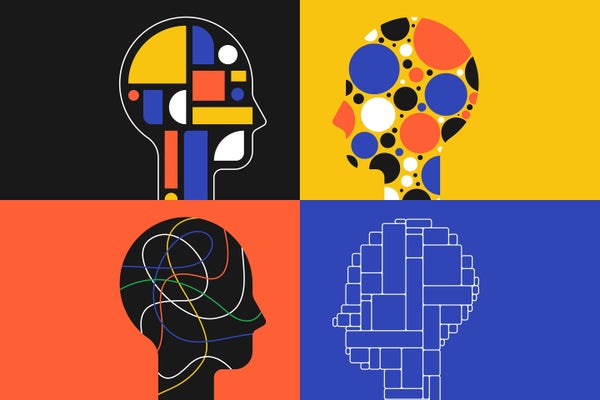Researchers Identify Four Autism Subtypes with Distinct Genes and Traits
Autism has at least four subtypes, an analysis of more than 5,000 children’s genes, traits and developmental trajectories has shown

Muharrem Huner/Getty Images
Stephen Shore, an autistic professor of special education at Adelphi University, has said: “If you’ve met one person with autism, you’ve met one person with autism.” This quote is popular in the autism community and among researchers because it reflects something they grapple with all the time: the truly incredible diversity of experiences that fall under the diagnosis of autism spectrum disorder (ASD).
“The beauty of the autism spectrum is: it speaks to this heterogeneity. And the downside [is that] it covers up the differences,” says Fred Volkmar, a psychiatrist and a professor emeritus at Yale University. Right now individuals are placed on the spectrum based on the level of severity, from level 1 to level 3, of two different criteria: social communication difficulties and restricted, repetitive behaviors. Those coarse groupings, however, miss so much of the nuance. That’s why researchers have spent decades trying to use genetics and behavioral characteristics to divide the spectrum into meaningful subtypes. The hope is that such subtypes can help guide care for autistic people and their families and reveal what causes different presentations of autism in the first place.
Now, in a study published on Wednesday in Nature Genetics, researchers have bridged an important gap by connecting different clusters of behavioral and developmental traits with underlying genetic differences. By analyzing data from a group of 5,392 autistic children, they identified four distinct subtypes of autism, each with different kinds of challenges, that are connected to specific types of genetic variations.
On supporting science journalism
If you’re enjoying this article, consider supporting our award-winning journalism by subscribing. By purchasing a subscription you are helping to ensure the future of impactful stories about the discoveries and ideas shaping our world today.
“For families navigating autism, understanding their child’s specific subtype can provide greater clarity and open the door to more personalized care, support and connection,” says Natalie Sauerwald, co-lead author of the paper, who studies genomics at the Flatiron Institute in New York City. But it’s not yet clear whether these four subtypes, which were identified with statistics in a nonrepresentative, largely white group of autistic kids, will be useful to help diagnose and care for autistic people in real-world clinical settings.
When genetic sequencing of the human genome began in earnest in the 1990s, autism researchers hoped to identify the genetic cause—or more likely, causes—of the condition. “Twenty years ago the geneticists were saying, ‘We’re not even going to need autism [as a diagnosis]; we’re just going to have genetically defined disorders,’” says Catherine Lord, a psychologist specializing in autism at the University of California, Los Angeles.
That hasn’t come to pass. “Autism genetics is very complex,” says the new study’s co-lead author Aviya Litman, a genomics graduate student at Princeton University. Despite autism being between 60 and 80 percent heritable, it’s hard to pin down a specific genetic cause for any one individual—the cause is only clear for about 20 percent of autistic people tested, Litman explains. Researchers have now identified hundreds of genes associated with autism, meaning that if an individual has certain genes, they have a much higher chance of being diagnosed as autistic. But even with this knowledge, scientists haven’t been able to reliably connect how these genes translate to specific autistic traits and developmental trajectories.
To bridge that gap, Litman, Sauerwald and their colleagues turned to data from a large study that tracked genetic information, traits and development of 5,392 autistic kids between the ages of four and 18. The researchers evaluated the young participants on social communication abilities, restrictive and repetitive behaviors, developmental milestones, and more. Using a computer model, statistical tests and clinical judgment, the team separated the participants into four robust groups based on patterns in their traits and development.
-
Social and Behavioral Challenges: These kids, 37 percent of the participants, had more difficulty with social communication and restrictive and repetitive behaviors than other autistic children. They also had more challenges with disruptive behavior, attention and anxiety. These children, however, did not experience significant developmental delays.
-
Mixed ASD with Developmental Delay: These kids, 19 percent of the participants, were more varied in their social communication and restrictive and repetitive behaviors, and they showed some developmental delays compared with nonautistic children.
-
Moderate Challenges: These kids, 34 percent of the participants, had consistently fewer difficulties with social communication, restrictive and repetitive behaviors and other core autistic traits compared with other autistic children—though they still had more difficulties with them than nonautistic children. They did not have developmental delays.
-
Broadly Affected: These kids, 10 percent of the participants, had more severe and wide-ranging difficulties with social communication, restrictive and repetitive behaviors and other core autistic traits, including developmental delays, compared with other autistic children.
These groups still contained a lot of variation within them, but participants in each were more similar to one another than they were to participants in other groups. The four groups were also replicated in another, smaller population of autistic children.
The researchers then analyzed genetic differences across the four groups and found that, remarkably, they had very distinct genetic profiles. “To me, the biggest surprise was how different the four subtypes turned out to be…. The underlying genetics and biology are very different,” says Olga Troyanskaya, a genomics researcher at Princeton and the study’s senior author. For example, different genes become active at different times in development—some become relevant before birth; others do so after. The Social and Behavioral Challenges group had more mutations in genes that became active after birth, Litman and Troyanskaya say, which could explain why these participants did not have developmental delays and tended to be diagnosed later than those in the other three groups.
“I expected these subtypes to have some differences in their biological underpinnings,” says Sauerwald, but the differences were even more pronounced than she expected, with very little biological overlap.
These four groups aren’t entirely unfamiliar to Volkmar and Lord, neither of whom were involved in the study. “The groups make sense and follow lots of findings by other researchers,” Lord says. In that regard, the subtypes “have a ‘rediscovering the wheel’ aspect,” Volkmar says—it’s the connection to genetics that makes these results most noteworthy.
These subgroups almost certainly don’t cover the entire autism spectrum, given that the results were based on a sample that didn’t represent the autistic population at large. The sample was 77 percent white, and some portions of the genetics results could only be performed for people with European ancestry because of limitations in available data. Also, some traits related to autism are rare and may not have been present enough in the sample to be picked up by the researchers’ statistical measurements. “This classification is not a definitive, comprehensive grouping,” Troyanskaya says. “With additional data, more precise definitions of subtypes could emerge.”
For Volkmar, the study “speaks to the need to be a bit more fine-grained in our approaches to diagnosis,” he says. “It spurs us to think about new approaches” to how to diagnose and understand autism—with subtypes rather than a single condition.









